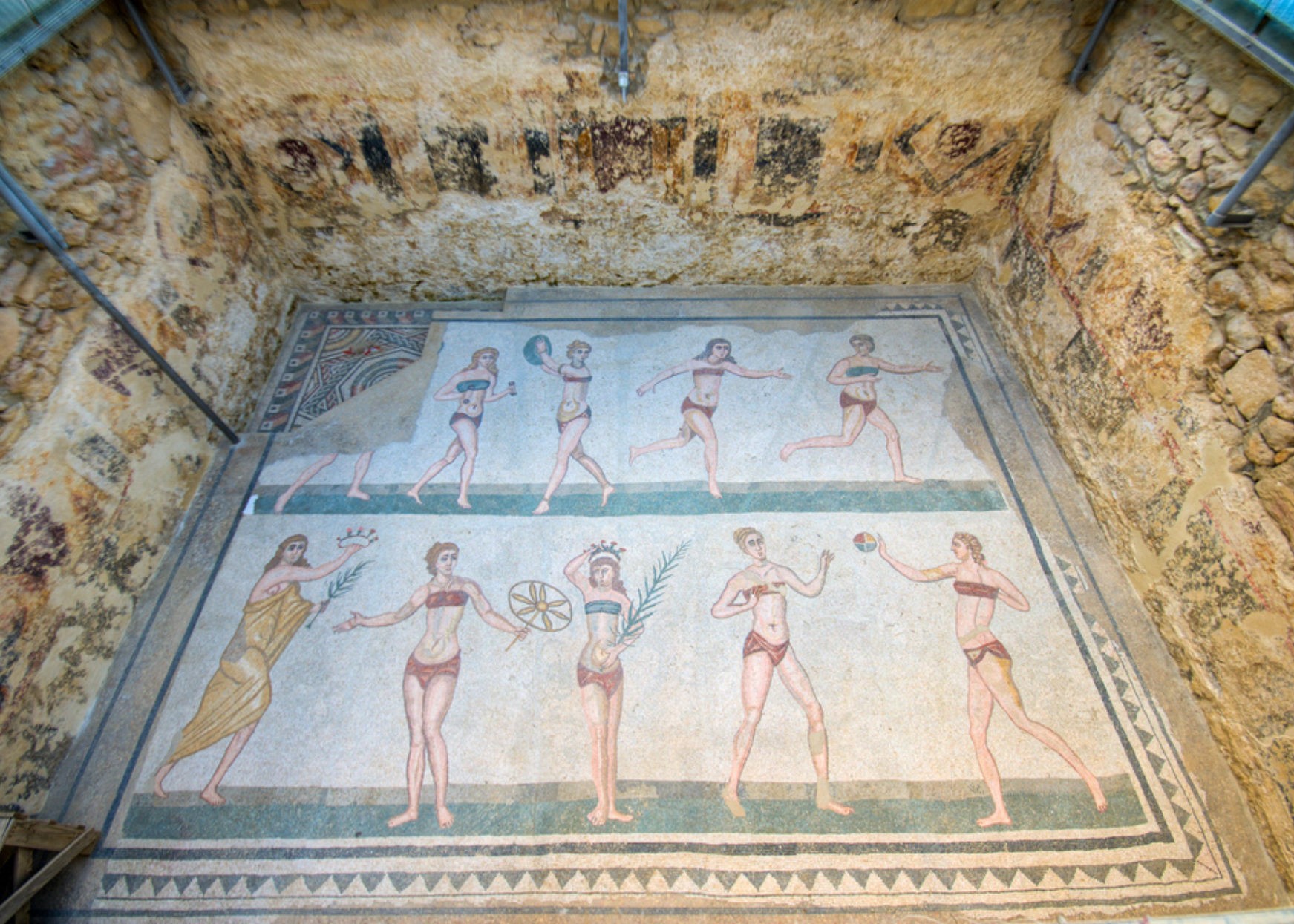
 italia.it
italia.it
Italian culture and history: Piazza Armerina, The Villa Romana
- WTI Magazine #115 May 19, 2019
-

 italia.it
italia.it
Piazza Armerina, splendid art city woven into the heart of Sicily, boasts a slew of monuments that tell of its glorious past. Meanwhile, the apple of the citizens' eyes is the Villa Romana del Casale; originally the property of a powerful Roman family, it dates back to the 4th Century A.D.
This majestic Imperial villa, standing tall in the Province of Enna (perhaps the most "Roman" of places on the Island), is a magnificent rural abode, fascinating, above all, for its captivating mosaics, considered the most beautiful and best-preserved of their kind. The fruits of meticulous labor, these precise yet moving images make for a significant adornment to what remains of this extravagant residence – made a UNESCO World Heritage Site in 1997.
The Villa Romana del Casale (trans. Roman Country Villa) in Piazza Armerina is considered to be one of the most important exemplars of an official governmental residence, attributed to the elaboration and exceptional beauty of its architectonic and decorative elements. Dated back to 320-350 A.D., the villa most likely belonged to a member of Rome’s senatorial class, probably a governor of the Eternal City itself (Praefectus Urbi). However, some scholars would maintain that the villa was built and eventually expanded upon the official commission of an Imperial functionary of a rather high order; they have identified this person to be Maximian, a Tetrarch (one of four co-Emperors) of Diocletian.
Archaeologists undertook an important excavation project in the mid-18th Century, bringing to light 37,674 sq ft of mosaic flooring – figurative and geometric – along with wall mosaics, columns, statues, capitals and coins. The theme of the mosaics? They are essentially, in part, paeans to the homeowner himself, and they are done, one might add, with a certain profundity and eloquence. Moreover, much of the house exhibits a definite influence from North African art styles, leading diggers and academics to believe that some of the construction workers from the African Continent.
In the mosaics, the viewer can detect varying styles and narrative cycles: one is dedicated to mythology and to Homeric poems, while another refers to nature and scenes from the Roman aristocracy’s quotidian life.
Four distinct zones have been identified from the villa’s remains: the monumental entrance with courtyard in horseshoe form; the villa’s center, built around another courtyard garden; a large room with three apses (trichora), preceded by an oval peristyle lined by several large niches; and the thermal baths complex.
Years-long restoration works centered around the mosaics and murals concluded only recently, in December 2012.
Today, visitors will find many different sections of the villa open for observation: the spa complex; the porticoed, entryway courtyard and honorary arch; the Vestibule and central, peristyled courtyard; the servants' quarters that include the Piccola Caccia room, the Grande Caccia corridor (spaces that contain small and large hunting scenes, respectively) and the Palestrite room; the northern main apartments with a mosaic of Ulysses and Polyphemus and the room of Amore and Psiche; the southern main apartments with a mosaic of the myth of Arion and the room of Eros and Pan; the Triclinium (formal Roman dining room) and portico; and the Basilica.
Piazza Armerina and Its Verdant Environs
The city of Piazza Armerina lies within the Erean Mountains, far inland from the Gulf of Gela. The forests inside Ronza Park surround it, as do points of interest such as Olivo Dam and the Montagna di Marzo Archaeological Site. Also nearby are Pergusa Lake, located within the enchanting and same-named Reserve, and the Riserva Naturale Orientata Rossomanno Grottascura Bellia.